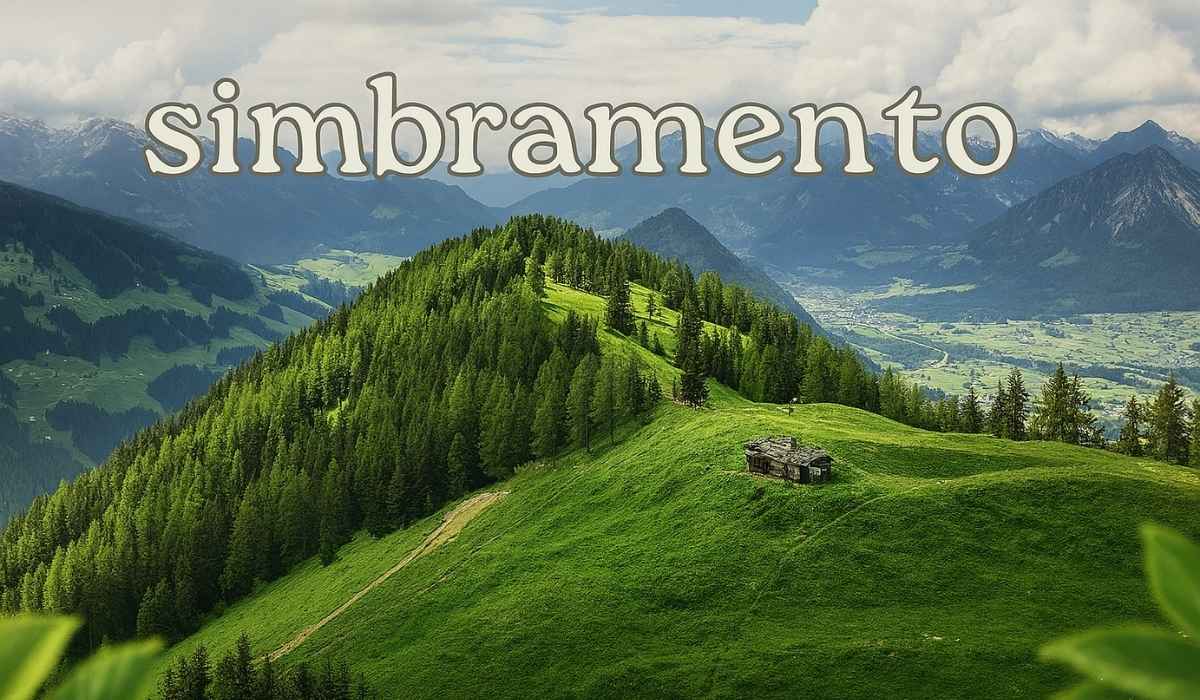Simbramento is a term deeply embedded in pastoral and agricultural traditions, specifically referring to the seasonal movement of livestock, particularly sheep, from mountainous areas to plains. Although many might not recognize the word instantly, the practice itself is an ancient one that has shaped rural economies, cultural practices, and even geographical landscapes for centuries. The term originates from regions in Italy, particularly Sardinia, where transhumance — the seasonal migration of livestock — is an essential part of life. This tradition isn’t just about moving animals; it symbolizes a deep connection between humans, animals, and the land they cultivate and protect. Simbramento reflects a way of life that prioritizes sustainability, respect for nature, and generational knowledge that is carefully passed from shepherd.
Historical Background of Simbramento
The origins of simbramento date back to ancient times when pastoral societies relied on the movement of livestock to optimize grazing and ensure the survival of herds during harsh seasons. In regions with mountainous terrains, such as Sardinia and the Apennines, the highlands offered lush pastures during the summer months. However, as winter approached, these areas would become inhospitable due to snow and cold weather. Thus, the shepherds would migrate with their flocks to the milder plains where the animals could continue grazing. This migration was not a haphazard journey but a well-planned, communal event that required careful coordination, knowledge of migratory routes, and understanding of environmental patterns. Simbrmento was often celebrated with local festivals, songs.
The Cultural Significance of Simbramento
Simbramento is more than an economic activity — it is a cultural phenomenon that encapsulates a community’s relationship with nature, livestock, and time-honored practices. In many regions, the movement of the herds is accompanied by festivities, music, and rituals that celebrate the connection between humans and animals. These events are social gatherings that reinforce community bonds, as families and neighbors come together to assist in the migration process. In Sardinia, for example, the simbrmento is celebrated with traditional songs known as “canti a tenore,” which are recognized by UNESCO as part of the intangible cultural heritage of humanity. The shepherds wear traditional garments, and the migration becomes a form of living history where ancient customs are kept alive.
Economic Impact of Simbramento in Pastoral Communities
Historically, the economic implications of simbramento were profound. The practice was essential for the survival of pastoral economies, ensuring that livestock remained healthy and productive year-round. This seasonal migration allowed communities to maximize the utility of both mountainous and lowland pastures, optimizing the resources available in different climatic conditions. The health of the livestock directly affected wool production, meat quality, and dairy yields, which were the cornerstones of many rural economies. Additionally, the routes taken during simbraento became established trade paths, facilitating the exchange of goods, cultures, and ideas between disparate regions. Markets often sprang up along these routes, creating economic opportunities beyond agriculture and animal husbandry. In modern times, while industrial farming has reduced the prevalence of simamento.
Environmental and Ecological Importance of Simbramento
Simbramento is not just beneficial to human societies but also plays a critical role in maintaining ecological balance. The practice of moving livestock prevents the overexploitation of a single grazing area, allowing pastures time to regenerate. This method of rotational grazing supports biodiversity, helps control invasive species, and promotes healthy soil ecosystems. Furthermore, the migration paths, often known as “tratturi” in Italy, have become natural corridors that aid in wildlife conservation, providing safe passage for various species. These pathways contribute to maintaining genetic diversity among plants and animals, ensuring the resilience of ecosystems in the face of environmental changes. In the context of modern environmental challenges such as climate change and habitat degradation.
Simbramento in Modern Times: Challenges and Revivals
In the modern era, simbramento faces significant challenges due to urbanization, industrial agriculture, and changing socio-economic structures. Younger generations are increasingly moving to urban areas, leaving behind the pastoral lifestyles of their ancestors. This demographic shift threatens the transmission of knowledge required to carry out simbrmento effectively. Additionally, modern farming techniques often favor stationary methods over migratory practices, citing convenience and cost-efficiency. However, there is a growing movement aimed at reviving and preserving simbraento. Cultural organizations, environmental groups, and local governments are working together to document these traditions, promote sustainable tourism, and educate the public about the benefits of transhumance. In some areas, festivals celebrating simbraento.
Symbolism and Rituals Associated with Simbramento
The rituals surrounding simbramento are deeply symbolic, reflecting a community’s connection to nature, cycles of life, and spirituality. For many shepherds, the journey is not just a physical movement but a spiritual pilgrimage. Blessing ceremonies are common, where priests or community elders offer prayers for the safety of the shepherds and their flocks. These blessings are often accompanied by the lighting of fires, singing of traditional songs, and offerings to local deities or saints believed to protect travelers and animals alike. Such rituals reinforce the sacred bond between humans and the environment, imbuing the practice of simbraento with layers of meaning that go beyond mere survival. The cultural artifacts associated with simbrmento — from traditional clothing.
Educational and Tourism Potential of Simbramento
As interest in sustainable tourism and cultural heritage grows, simbramento offers a unique educational opportunity. Tourists and scholars alike are drawn to the rich history and practices associated with this tradition. Educational programs centered on simbramento can provide immersive experiences where participants learn about animal husbandry, environmental stewardship, and traditional crafts. Workshops, guided migrations, and cultural festivals can serve as platforms for educating both locals and visitors about the importance of preserving such traditions. This form of experiential tourism not only helps in the conservation of cultural heritage but also provides economic benefits to rural communities. By turning simbramento into a learning experience.
The Future of Simbramento: Adapting Tradition to Modern Needs
The future of simbramento lies in its ability to adapt to contemporary challenges while retaining its core values. Integrating modern technology with traditional practices can offer new avenues for sustaining this heritage. For example, GPS tracking can aid in monitoring migratory routes, ensuring the safety of herds and shepherds. Mobile veterinary services can improve animal health during migrations, while social media can be used to document and share the journey with a wider audience. Policies that support agroecology, biodiversity, and rural development can provide the necessary infrastructure and incentives for communities to continue practicing simbrmento. Collaborations between governments, NGOs, and local communities can create frameworks that protect migratory routes and promote sustainable grazing practices. By blending innovation with tradition.
Conclusion: Why Simbramento Still Matters Today
Simbramento is more than a nostalgic look at the past; it is a living tradition with significant cultural, economic, and environmental relevance. It embodies the principles of sustainability, community cohesion, and respect for nature that are increasingly essential in today’s world. As we face global challenges such as climate change, biodiversity loss, and cultural homogenization, practices like simbramento remind us of the value of traditional knowledge and its potential to inform modern solutions. Preserving and revitalizing simbramento is not just about protecting a cultural heritage but about reimagining how we interact with our environment in a holistic and respectful manner. Whether through education, tourism, policy support, or community initiatives.
Frequently Asked Questions (FAQ)
1. What does “simbramento” mean?
- Simbramento refers to the seasonal migration of livestock, especially sheep, from mountainous areas to plains, a traditional practice aimed at optimizing grazing and ensuring animal health throughout the year.
2. Where is simbramento primarily practiced?
- Simbramento is primarily practiced in regions of Italy, especially Sardinia and the Apennines, where pastoralism is a significant part of the cultural and economic landscape.
3. Why is simbramento important for the environment?
- Simbramento helps prevent overgrazing, supports biodiversity, and maintains ecological balance by allowing pastures to regenerate and serving as natural wildlife corridors.
4. Is simbramento still practiced today?
- Yes, although less common due to urbanization and industrial agriculture, some communities continue to practice simbramento, often integrating it with cultural tourism and environmental conservation efforts.
5. How can simbramento be preserved for future generations?
- Simbramento can be preserved through educational programs, sustainable tourism, policy support, and by incorporating modern technology to enhance the traditional practices while maintaining their core cultural and environmental values.









